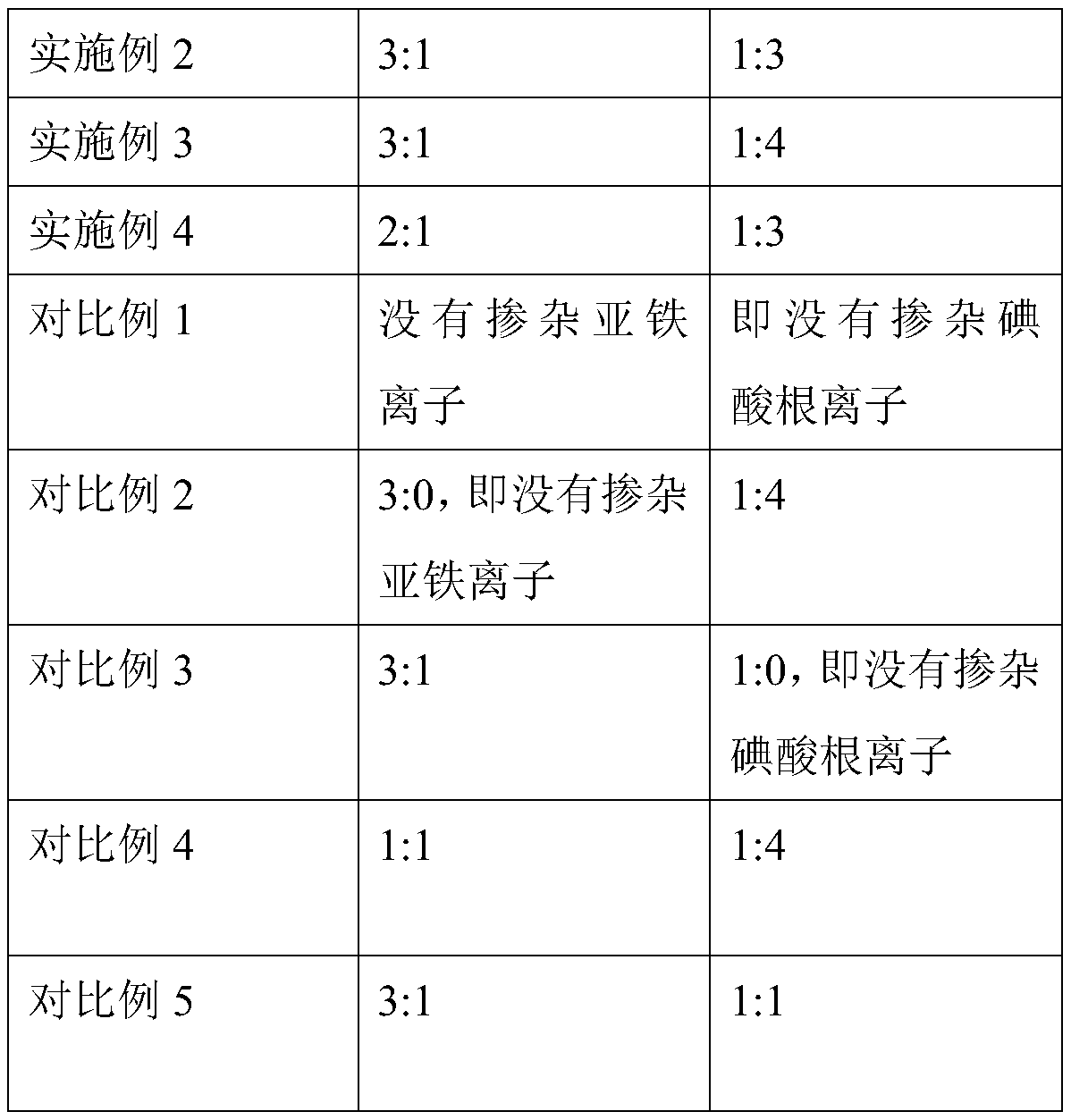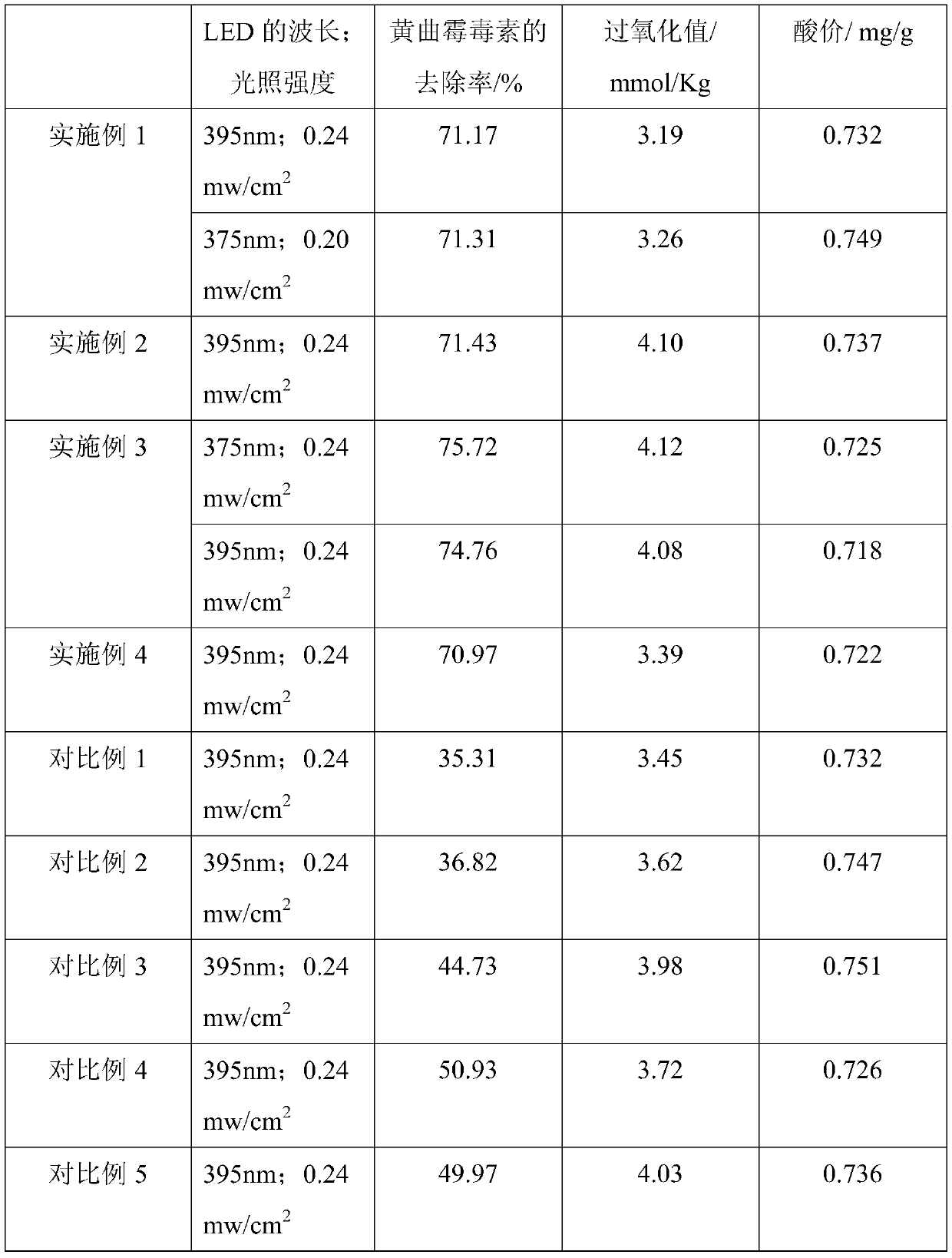Doping-modified TiO2 photocatalytic thin film, and preparation method and application thereof
A photocatalytic film and modification technology, applied in the field of photocatalysis, can solve the problems of high cost, narrow light response range and low photocatalytic efficiency, and achieve the effects of stable light intensity, wide light response range and high removal efficiency.
- Summary
- Abstract
- Description
- Claims
- Application Information
AI Technical Summary
Problems solved by technology
Method used
Image
Examples
Embodiment 1
[0037] A doped modified TiO 2 The preparation method of photocatalytic thin film, comprises the following steps:
[0038] S1. The nanometer TiO of model is P25 2 Added to distilled water, formulated to contain nano-TiO 2 Aqueous solution, in which TiO 2 The mass fraction is 0.15%;
[0039] Add PVP-K30 to distilled water to prepare an aqueous solution containing PVP-K30, wherein the mass fraction of PVP-K30 is 15%;
[0040] Under constant stirring, will contain nano-TiO 2 Add the aqueous solution containing PVP-K30 to the aqueous solution containing PVP-K30, and add nitric acid to adjust the pH value of the solution to 3, continue stirring for 0.5h, and then use 500W ultrasonic wave for 30min to form stable nano-TiO 2 Sol; the above nano-TiO containing polyvinylpyrrolidone 2 Sol, Nano TiO 2 The mass ratio to polyvinylpyrrolidone is 1:100.
[0041] Immerse the quartz glass tube into the above nano-TiO containing polyvinylpyrrolidone 2 In the sol, dipping, the dipping ti...
Embodiment 2~4
[0045] Embodiment 2~4 and comparative example 1~5
[0046] The preparation methods of the following examples and comparative examples are basically the same as those of Example 1, the difference from Example 1 lies in the ratio of n(Ti) to n(Fe), and the ratio of n(Ti) to n(I). Please see Table 1 for details:
[0047] Table 1
[0048]
[0049]
PUM
| Property | Measurement | Unit |
|---|---|---|
| quality score | aaaaa | aaaaa |
Abstract
Description
Claims
Application Information
 Login to View More
Login to View More - R&D
- Intellectual Property
- Life Sciences
- Materials
- Tech Scout
- Unparalleled Data Quality
- Higher Quality Content
- 60% Fewer Hallucinations
Browse by: Latest US Patents, China's latest patents, Technical Efficacy Thesaurus, Application Domain, Technology Topic, Popular Technical Reports.
© 2025 PatSnap. All rights reserved.Legal|Privacy policy|Modern Slavery Act Transparency Statement|Sitemap|About US| Contact US: help@patsnap.com



